Fresh herbs can transform everyday meals into gourmet experiences, infusing flavor, aroma, and health benefits into your cooking. But what if you live in a small apartment, have limited natural light, or your kitchen windows face the wrong direction? The good news is that you can still grow a flourishing indoor herb garden—even without sunlight.
With the right setup, lighting alternatives, and care techniques, herbs like basil, parsley, mint, and thyme can thrive indoors year-round. This guide will walk you through everything you need to know to grow a lush, aromatic indoor herb garden in low-light conditions.
Why Sunlight Isn’t Always Necessary
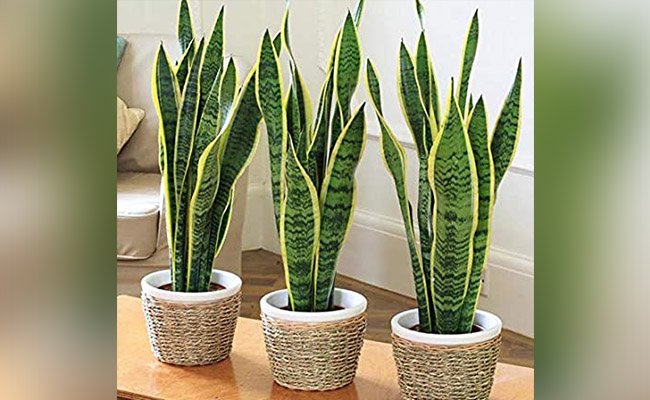
Most herbs are sun-loving plants that naturally thrive in bright, outdoor conditions. However, advances in indoor gardening technology and better understanding of plant biology have made it possible to grow them indoors with minimal or no sunlight.
Plants don’t specifically need “sunlight”—they need light energy, particularly from the blue and red wavelengths of the spectrum. By mimicking natural sunlight with artificial grow lights or strategic indoor placement, you can provide your herbs with everything they need for healthy photosynthesis.
Choosing the Right Herbs for Low-Light Spaces
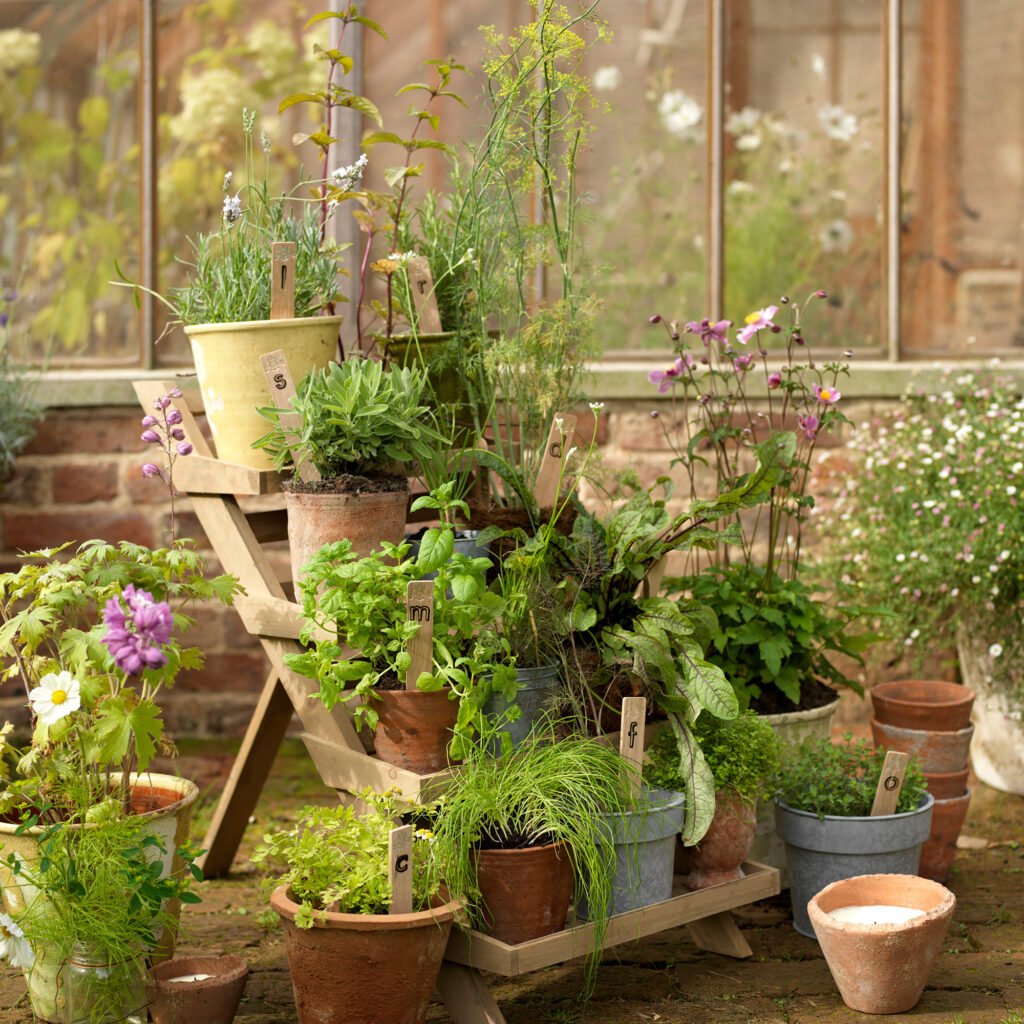
Not all herbs are suited to low-light conditions. Some, like basil and rosemary, crave intense light, while others tolerate shade or artificial lighting. Below are the best herbs for growing indoors without direct sunlight:
1. Mint (Mentha spp.)
Mint is one of the easiest herbs to grow indoors. It tolerates low light, grows rapidly, and produces a refreshing fragrance that brightens any room. Keep the soil moist, and it will reward you with lush green leaves for teas, desserts, and salads.
Tip: Trim the stems often to encourage bushy growth and prevent legginess.
2. Parsley (Petroselinum crispum)
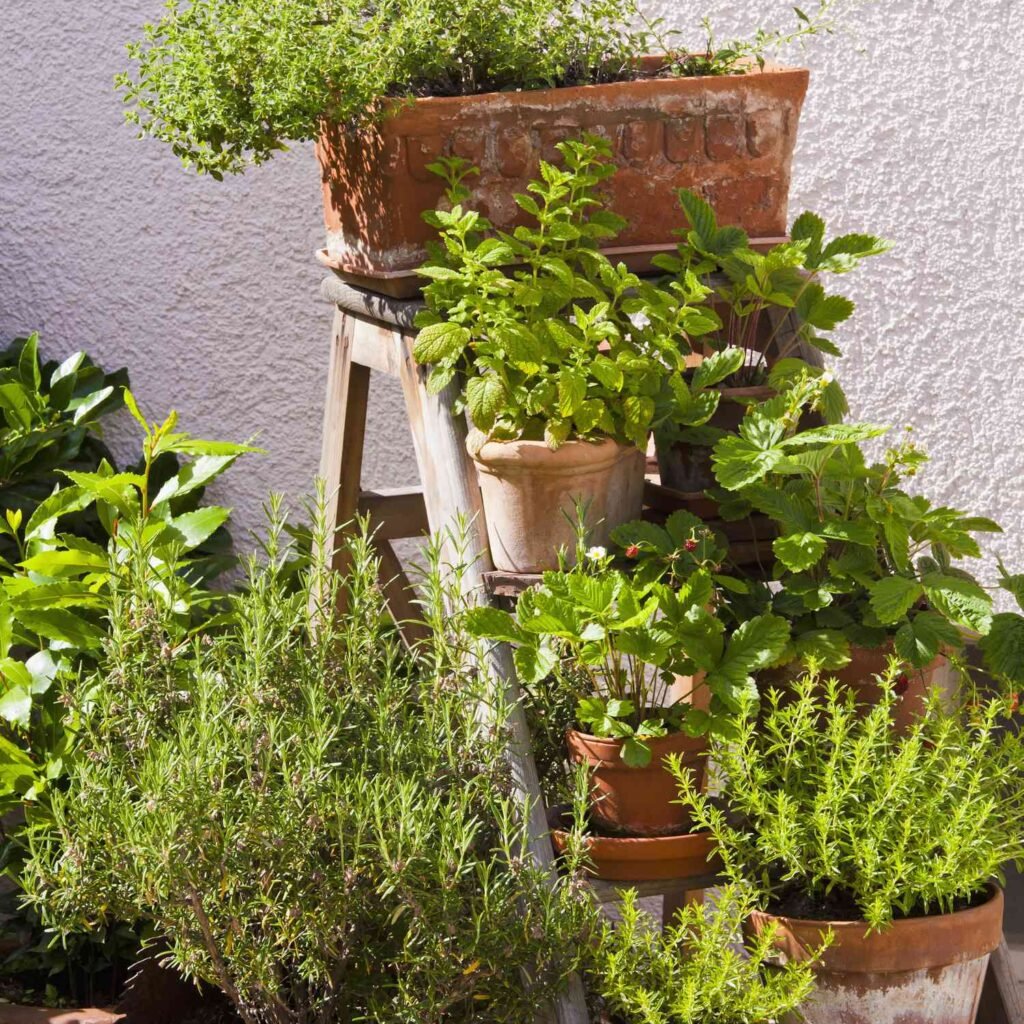
Parsley grows well under fluorescent or LED lights and can handle less-than-ideal light conditions. It may grow slowly at first, but once established, it becomes a reliable kitchen staple.
Tip: Harvest outer leaves first and allow inner leaves to mature.
3. Chives (Allium schoenoprasum)
Chives thrive indoors and adapt beautifully to artificial lighting. Their mild onion flavor makes them perfect for garnishing soups, salads, and dips.
Tip: Snip the leaves regularly to encourage new shoots.
4. Thyme (Thymus vulgaris)
Thyme tolerates partial shade and requires less light than most Mediterranean herbs. It prefers drier soil, so water sparingly. Its tiny leaves pack a punch of flavor in soups, roasts, and sauces.
Tip: Place near a small fan or open window for airflow—it helps mimic outdoor conditions.
5. Oregano (Origanum vulgare)
Oregano loves warmth and can tolerate moderate light. It’s an excellent choice for an indoor herb garden near artificial lights.
Tip: Allow the top inch of soil to dry before watering.
6. Cilantro (Coriandrum sativum)
Cilantro prefers cooler temperatures and indirect light. Under artificial lighting, it can produce fragrant leaves for several weeks before flowering.
Tip: Grow multiple small batches for continuous harvests, as cilantro grows quickly but doesn’t last long.
7. Lemon Balm (Melissa officinalis)
This herb tolerates low light and fills your space with a calming lemon scent. It’s perfect for teas, potpourri, and natural home fragrance.
Tip: Trim frequently to prevent the plant from becoming leggy.
Best Lighting Alternatives for Herbs Without Sunlight
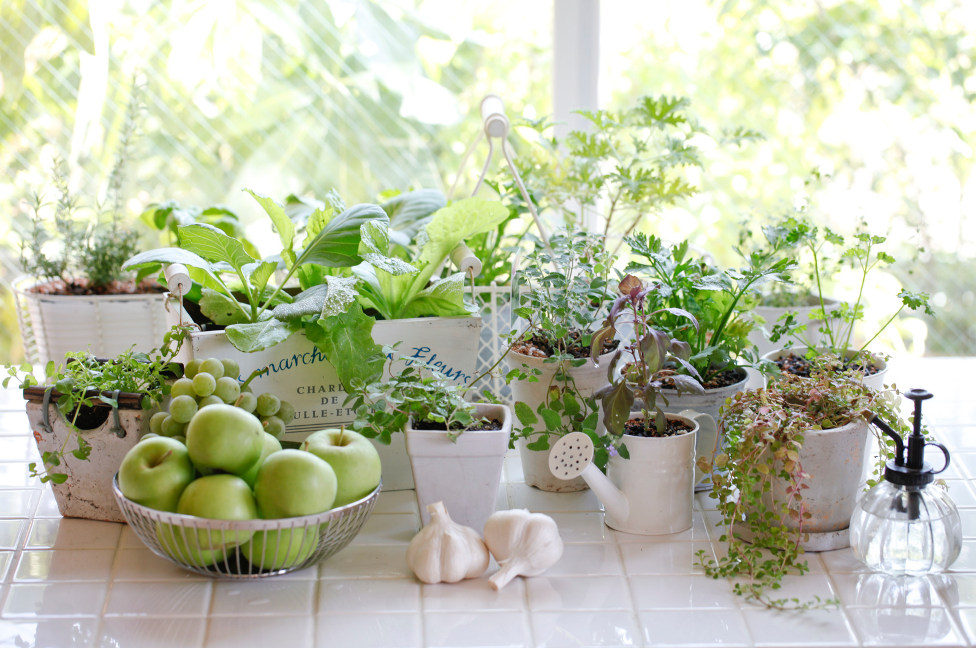
When growing herbs indoors, artificial lighting is the key to success. Here’s how to choose and use the right lighting setup:
1. LED Grow Lights
Modern LED grow lights are energy-efficient, long-lasting, and designed to mimic natural sunlight. They emit the necessary red and blue wavelengths for optimal plant growth.
- Pros: Low heat emission, customizable light spectrum, energy-efficient.
- Placement: Keep LEDs about 6–12 inches above the herbs.
2. Fluorescent Lights
Compact fluorescent lamps (CFLs) or T5 fluorescent tubes are great budget-friendly options. They work well for small herb gardens and provide sufficient brightness for leafy growth.
- Pros: Affordable and widely available.
- Placement: Keep 6–8 inches above the plants for best results.
3. Full-Spectrum Grow Lights
These simulate the natural balance of sunlight and can support photosynthesis effectively. They’re perfect for larger setups or herb gardens with multiple varieties.
- Tip: Use timers to maintain consistent light exposure—12 to 16 hours per day is ideal for most herbs.
Setting Up Your Indoor Herb Garden
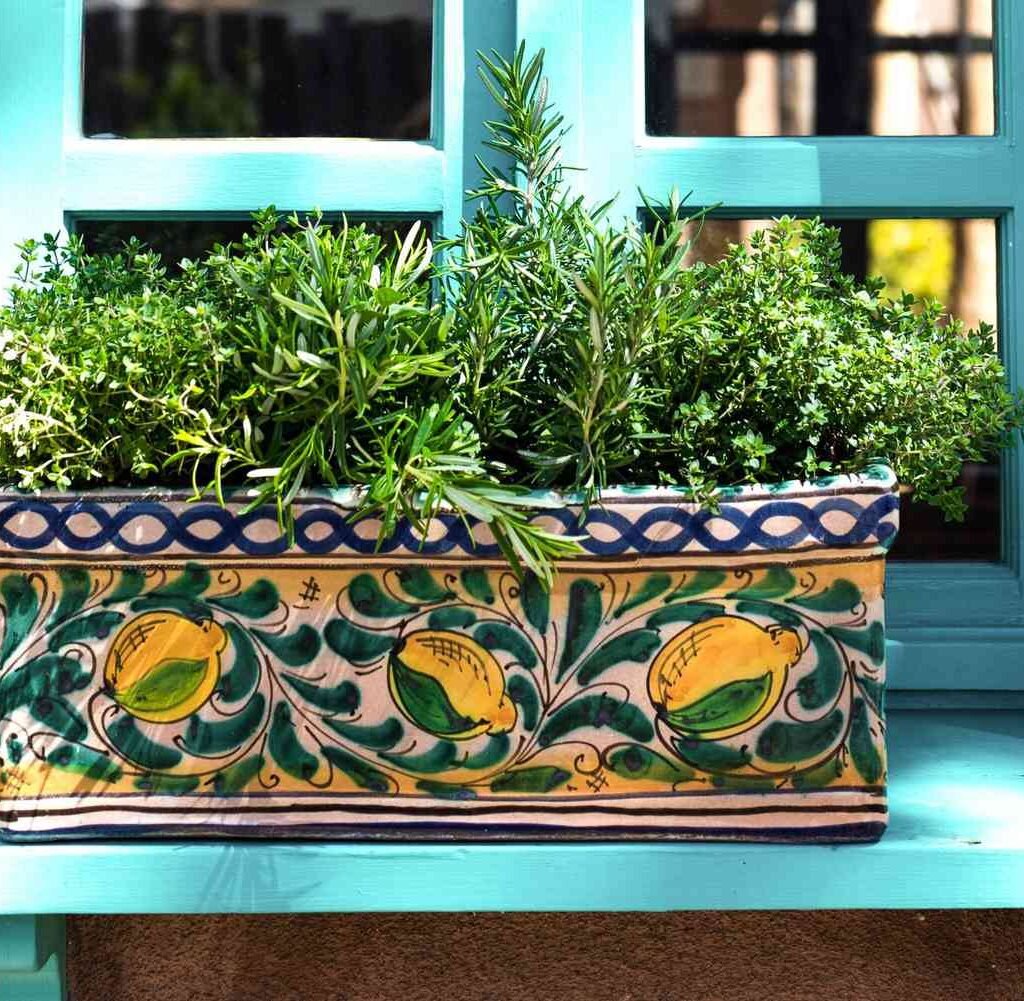
Creating an efficient indoor garden setup doesn’t require much space or equipment. Follow these simple steps for a thriving herb garden without sunlight:
1. Choose the Right Containers
Select pots with good drainage holes to prevent root rot. Herbs generally prefer snug pots (4–6 inches wide) since compact roots encourage leaf growth.
You can use ceramic, terracotta, or even recycled containers—just ensure there’s proper drainage.
2. Use High-Quality Potting Mix
Avoid regular garden soil; it’s too dense for indoor growing. Instead, use a lightweight potting mix with good aeration and moisture retention. A mix containing peat, coco coir, and perlite works best.
Tip: Add a small amount of compost or organic fertilizer for nutrients.
3. Set Up Lighting
Position your chosen grow light 6–12 inches above the plants and adjust its height as your herbs grow. Set a timer to provide 12–16 hours of light daily, followed by 8 hours of darkness for rest.
Tip: Rotate your pots weekly to ensure even light exposure.
4. Maintain Proper Watering Habits
Overwatering is a common mistake. Most herbs prefer slightly moist—but not soggy—soil. Insert your finger about an inch deep; if it feels dry, it’s time to water.
Tip: Use room-temperature water and avoid wetting the leaves to prevent fungal issues.
5. Monitor Humidity and Temperature
Indoor herbs thrive in moderate humidity (40–60%) and temperatures between 18–24°C (65–75°F). If your home is too dry, use a humidity tray or a small humidifier nearby.
Tip: Avoid placing herbs near heating vents or air conditioners.
6. Fertilize Sparingly
Since indoor herbs grow slower, they need fewer nutrients. Use a diluted liquid organic fertilizer once every 3–4 weeks during active growth periods.
Tip: Over-fertilizing can reduce flavor intensity in herbs, so less is more.
7. Prune Regularly
Frequent trimming encourages fuller, bushier growth. Always snip above a leaf node to stimulate new branching.
Tip: Use sharp, clean scissors to avoid damaging the stems.
Troubleshooting Common Problems
Even the best indoor gardens face occasional challenges. Here’s how to handle common issues:
1. Leggy Growth:
If herbs grow tall and spindly, they’re not getting enough light. Move them closer to the grow light or extend light exposure time.
2. Yellow Leaves:
Often a sign of overwatering or poor drainage. Let the soil dry before watering again.
3. Slow Growth:
Could be due to low temperatures or lack of nutrients. Move plants to a warmer spot and feed with a mild fertilizer.
4. Mold on Soil:
Indicates excessive moisture. Improve air circulation and reduce watering frequency.
Creative Ways to Display Indoor Herbs
A thriving indoor herb garden can also enhance your home decor. Try these creative ideas:
- Wall-Mounted Planters: Save counter space and create a living green wall in your kitchen.
- Hanging Baskets: Perfect for small spaces; hang herbs like mint or oregano near your grow light.
- Tiered Shelves: Organize multiple herbs vertically under one lighting system.
- Mason Jar Gardens: Aesthetic and compact, ideal for window ledges or countertops (ensure proper drainage).
Harvesting and Using Your Herbs
Harvest herbs in the morning when their oils are most concentrated. Always trim from the top to promote new growth.
Freshly cut herbs can be used immediately in dishes or dried for later use. Popular ways to enjoy your harvest include:
- Basil and parsley for pasta and sauces.
- Mint for teas and desserts.
- Thyme and oregano for roasts and soups.
- Cilantro for chutneys, curries, and salsas.
Final Thoughts
Growing an indoor herb garden without sunlight is entirely possible with the right planning and tools. By selecting shade-tolerant herbs, providing consistent artificial lighting, and maintaining proper care routines, you can enjoy year-round access to fresh, fragrant herbs right in your kitchen.
Not only does this add greenery and aroma to your home, but it also supports sustainable living by reducing waste and promoting self-sufficiency. Whether you’re an urban dweller or a busy professional, a thriving indoor herb garden is within reach—no sunlight required.
With just a few pots, some artificial light, and a little love, you can cultivate your own green oasis and enjoy the endless rewards of fresh, homegrown herbs.
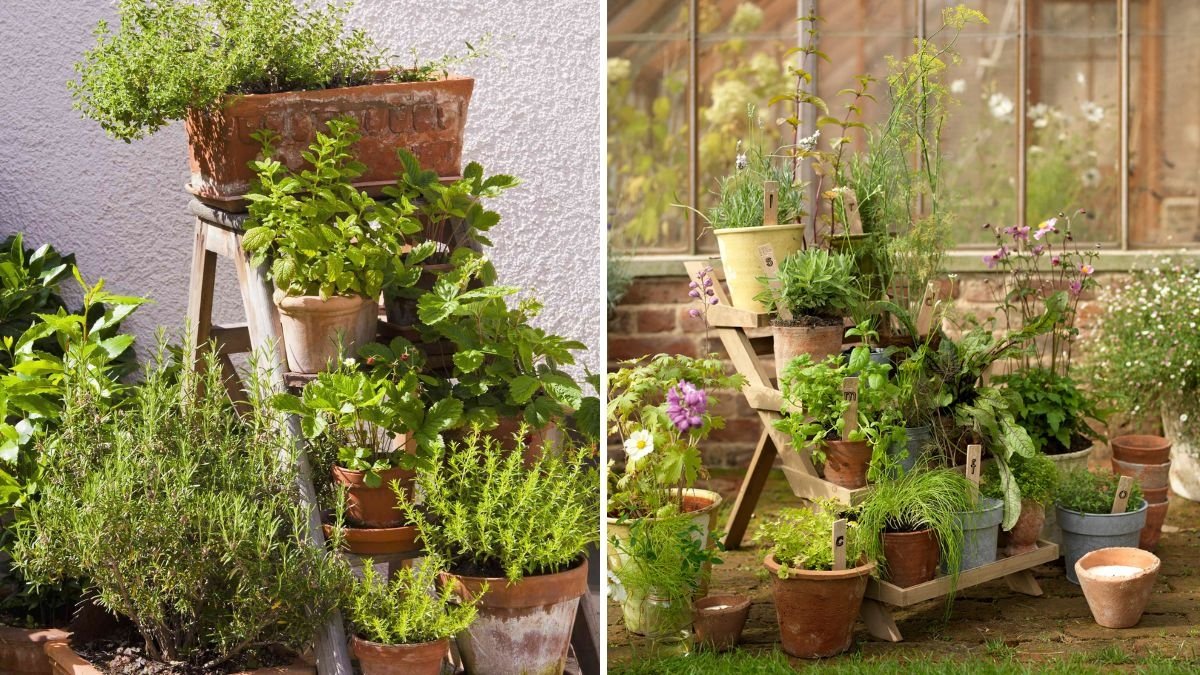




Leave A Comment